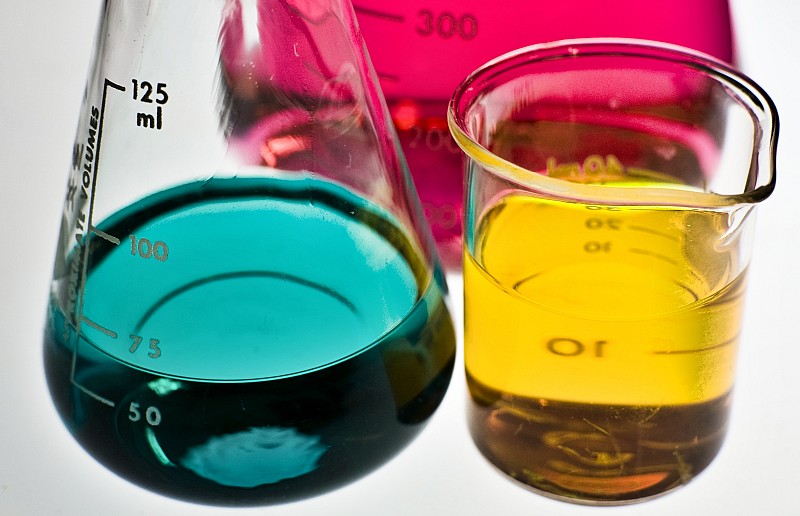Blog
What Happens When You Heat Acetic Acid? – Discover the Effects
What happens when you heat acetic acid? Acetic acid, commonly known as vinegar in its diluted form, is an organic compound that plays a crucial role in a variety of chemical reactions. This simple, colorless liquid has a distinctive pungent smell and plays a key role in food preparation, industrial processes, and as a chemical reagent. When you heat acetic acid, several fascinating chemical and physical changes occur, some of which can be unpredictable depending on the temperature and concentration of the acid. In this article, we will explore what happens when you heat acetic acid and how heat affects its properties.
What Happens When You Heat Acetic Acid: Physical Changes
When acetic acid is heated, it undergoes some physical changes. One of the most noticeable changes is the evaporation of the liquid. As the temperature increases, acetic acid turns into vapor. This is especially true when heating dilute acetic acid solutions, such as vinegar, which consists mostly of water. In these solutions, heating causes the water to evaporate more quickly, leaving behind a stronger concentration of acetic acid in the form of vapor.
Acetic Acid Boiling Point – Key Factors Explained
What Happens When You Heat Acetic Acid: Chemical Changes
Heating acetic acid does not only lead to physical changes. When acetic acid is heated to higher temperatures, it can undergo several chemical reactions. At a relatively low heat, acetic acid might decompose into other compounds. For example, acetic acid can break down into acetic anhydride and water when subjected to intense heat in the presence of a catalyst. Acetic acid reacts during industrial processes when heated to produce acetic anhydride.
Another chemical change that occurs when you heat acetic acid is the dehydration reaction. At higher temperatures, acetic acid can lose water molecules, especially when the concentration is high, leading to the formation of acetic anhydride. This is another important reaction that contributes to the versatility of acetic acid in industrial and chemical manufacturing processes.
What Happens When You Heat Acetic Acid: The Effect on pH Levels
Acetic acid is a weak acid, which means that it only partially dissociates in water. When acetic acid is heated, its dissociation behavior can change. Typically, heating acetic acid increases the concentration of free protons (H⁺ ions), which can cause the pH level of the solution to drop. This can make the solution more acidic, depending on the temperature and the concentration of acetic acid in the mixture.
Heating acetic acid causes a change in pH, which plays a crucial role in various applications, such as food preservation, where acetic acid serves as a preservative. The increase in acidity when heating can alter the preservation properties of acetic acid and influence its antimicrobial activity.
What Happens When You Heat Acetic Acid: Decomposition at High Temperatures
When acetic acid is heated to very high temperatures, it can decompose further. At temperatures around 400°C (752°F), acetic acid begins to break down into methane and carbon dioxide, which are gases. Pyrolysis occurs when acetic acid undergoes extreme heat, releasing energy in the form of heat and light. This process breaks down acetic acid and is often used in the production of industrial chemicals like methane.
This decomposition reaction can also produce acetic anhydride, acetone, and various carbon-containing byproducts, depending on the conditions of the heat and the presence of catalysts. The high-temperature decomposition of acetic acid is a vital step in the production of many important chemical compounds used in industry.
What Happens When You Heat Acetic Acid: Formation of Acetate Esters
One of the most useful reactions that occur when you heat acetic acid is esterification. When acetic acid is heated in the presence of alcohols, it forms acetate esters. This reaction is commonly used in the production of fragrances, plastics, and various chemical compounds. For example, heating acetic acid with ethanol (ethyl alcohol) will produce ethyl acetate, a widely used solvent in industries.
The esterification process requires heat to accelerate the reaction, and it is important to control the temperature carefully. If the temperature is too high, the reaction could proceed too quickly and cause unwanted byproducts. On the other hand, if the temperature is too low, the reaction might not occur efficiently.
What Happens When You Heat Acetic Acid: Safety Concerns
Heating acetic acid, particularly concentrated acetic acid or glacial acetic acid, comes with safety concerns. The vapors of concentrated acetic acid can irritate the eyes, skin, and respiratory system, so it is essential to heat acetic acid in a well-ventilated area. Additionally, the production of acetic anhydride and other volatile compounds can pose fire hazards if not carefully monitored. As such, it is crucial to follow safety protocols and use appropriate protective equipment, such as gloves, goggles, and lab coats when handling heated acetic acid.
What Happens When You Heat Acetic Acid: Industrial Applications
In industrial settings, workers heat acetic acid for various applications. For instance, in the production of acetic anhydride, a vital industrial chemical, they heat acetic acid and react it with acetic acid or other chemicals to produce a more concentrated compound. Manufacturers use acetic anhydride in the production of plastics, textiles, and pharmaceuticals.
Another industrial use of heated acetic acid is in the production of acetate fibers. Manufacturers commonly use acetate fibers in textiles, producing them through a process that involves heating acetic acid and reacting it with cellulose. The heating of acetic acid also plays a role in producing various solvents, such as ethyl acetate, which serves as a solvent in paints, coatings, and adhesives.
Conclusion: What Happens When You Heat Acetic Acid?
Heating acetic acid causes physical and chemical changes, making it versatile and valuable in various applications. Acetic acid reacts differently to temperature changes, including evaporation, decomposition, esterification, and pH shifts, affecting its use. Heating acetic acid produces valuable chemicals but requires careful handling due to safety risks from high temperatures and acids.
Follow us on Facebook!

